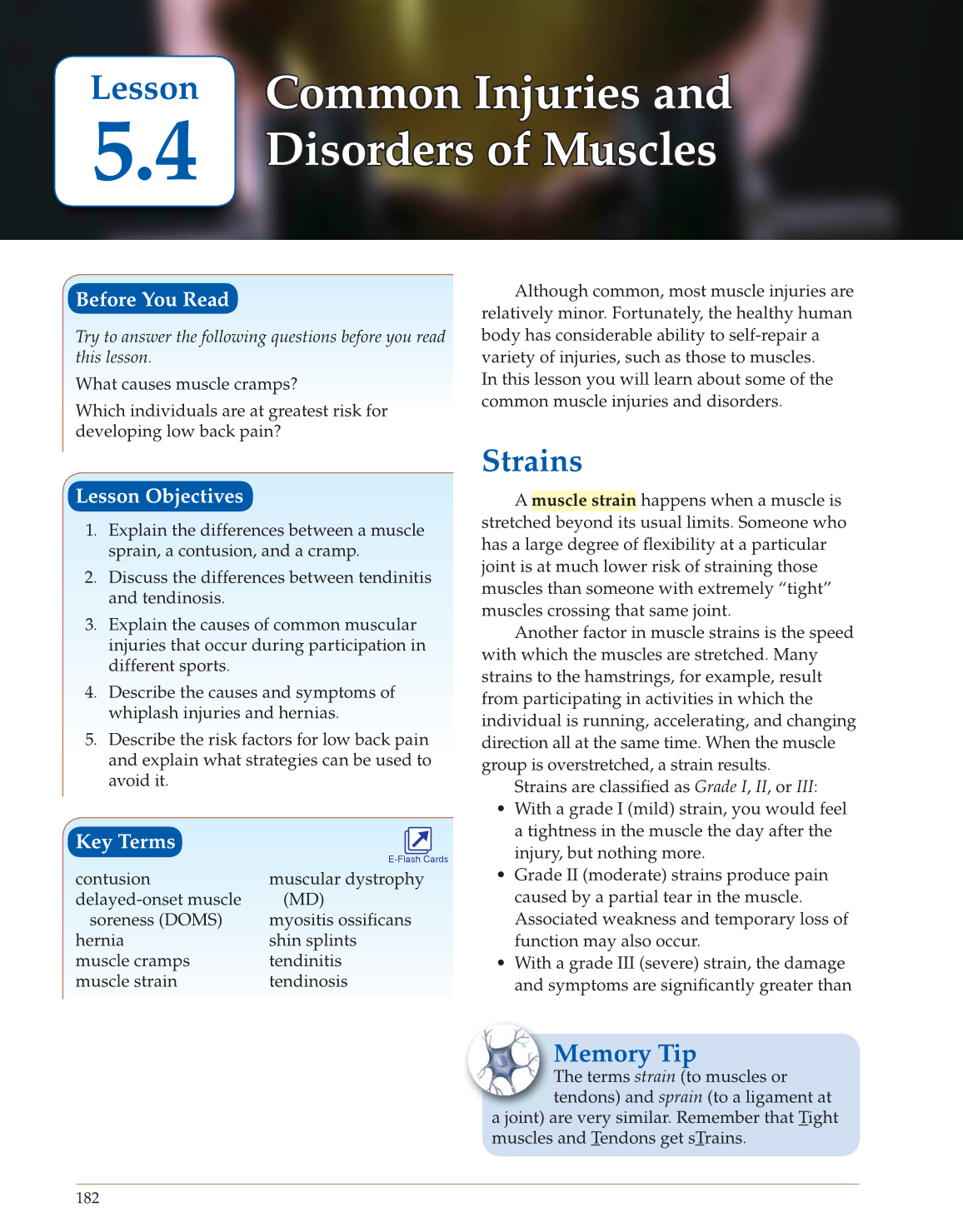182
Lesson
Although common, most muscle injuries are
relatively minor. Fortunately, the healthy human
body has considerable ability to self-repair a
variety of injuries, such as those to muscles.
In this lesson you will learn about some of the
common muscle injuries and disorders.
Strains
A muscle strain happens when a muscle is
stretched beyond its usual limits. Someone who
has a large degree of fl exibility at a particular
joint is at much lower risk of straining those
muscles than someone with extremely “tight”
muscles crossing that same joint.
Another factor in muscle strains is the speed
with which the muscles are stretched. Many
strains to the hamstrings, for example, result
from participating in activities in which the
individual is running, accelerating, and changing
direction all at the same time. When the muscle
group is overstretched, a strain results.
Strains are classifi ed as Grade I, II, or III:
• With a grade I (mild) strain, you would feel
a tightness in the muscle the day after the
injury, but nothing more.
• Grade II (moderate) strains produce pain
caused by a partial tear in the muscle.
Associated weakness and temporary loss of
function may also occur.
• With a grade III (severe) strain, the damage
and symptoms are signifi cantly greater than
5.4
Common Injuries andand Common Injuries
Disorders of Disorders of MusclesMuscles
Before You Read
Try to answer the following questions before you read
this lesson.
What causes muscle cramps?
Which individuals are at greatest risk for
developing low back pain?
Lesson Objectives
1. Explain the differences between a muscle
sprain, a contusion, and a cramp.
2. Discuss the differences between tendinitis
and tendinosis.
3. Explain the causes of common muscular
injuries that occur during participation in
different sports.
4. Describe the causes and symptoms of
whiplash injuries and hernias.
5. Describe the risk factors for low back pain
and explain what strategies can be used to
avoid it.
Key Terms
contusion
delayed-onset muscle
soreness (DOMS)
hernia
muscle cramps
muscle strain
muscular dystrophy
(MD)
myositis ossifi cans
shin splints
tendinitis
tendinosis
Memory Tip
The terms strain (to muscles or
tendons) and sprain (to a ligament at
a joint) are very similar. Remember that Tight
muscles and Tendons get sTrains.
E-Flash Cards
